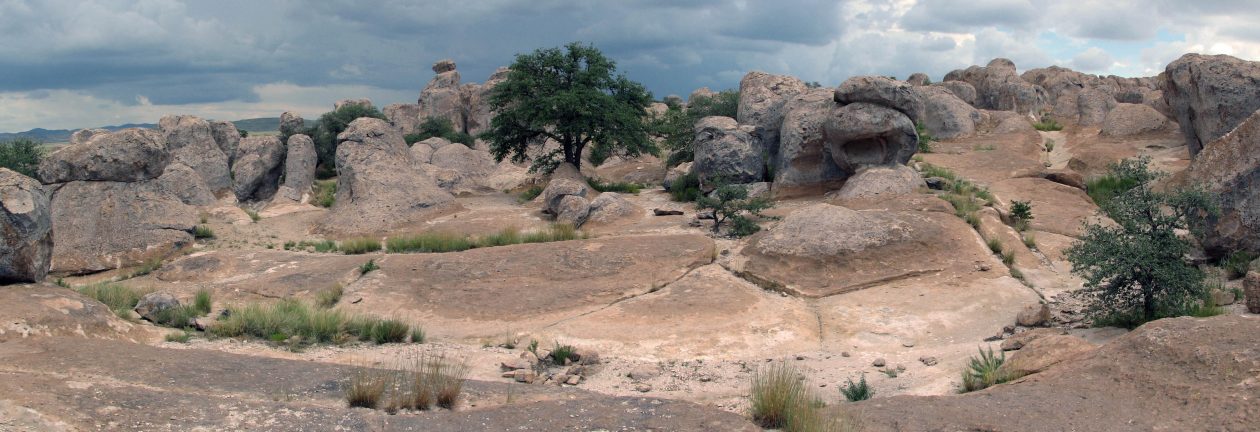Siem Reap, Cambodia
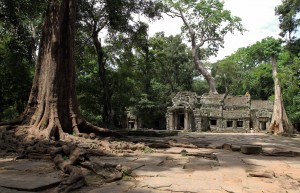
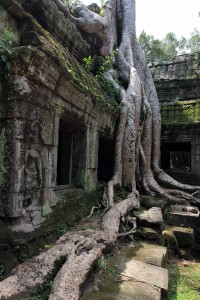
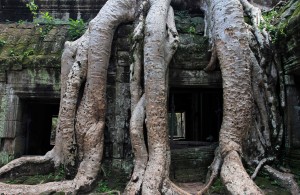
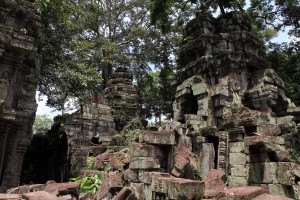
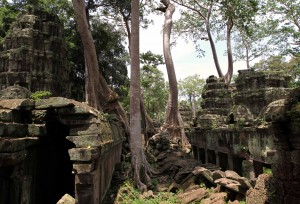
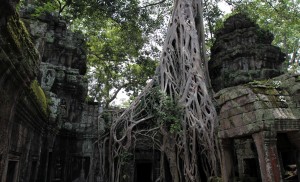
I woke up today prepared to see many more ancient temples of the Khmer Empire. Originally I was planning on renting a bicycle again like I did yesterday, but the moment I walked out of the hotel I dreaded the idea of cycling on the less than ideal roads in Cambodia, so I asked a tuk-tuk driver how much it would cost to get a ride to Ta Prohm temple; he told me it would cost eight USD; I decided to pay the price to get to the temples quicker and planned to travel on foot within the Angkor Park once there. At the entrance I paid for another day pass (twenty USD) and was then driven to Ta Prohm temple. Once at the temple, my driver asked if I would like him to drive me around for the rest of the day to see the rest of the popular temples I hadn’t seen yet, which would cost me twenty USD total; I decided that was a more than fair price (at least by American standards, so I agreed. My driver then waited for me as I entered the Ta Prohm temple complex. Ta Prohm temple is famous for all of the tree growth on the temple itself; large roots cling to the stone walls in several places and giant trees shoot up out of the different ruins; because of its rugged look it has been featured in films such as ‘Lara Croft: Tomb Raider’. The temple was built in 1186 AD (in the Bayon-style) by King Jayavarman VII as a Mahayana Buddhist monastery and university. I spent a lot of time walking around the temple ruins, exploring every possible passage and trail that wasn’t blocked off with a “No Entry” sign; there were also many tourists crowding around the best photo-spots, so I spent a good amount of time waiting in order to get decent pictures. Once I was satisfied that I had seen all that there was to see, I exited the temple, found my tuk-tuk driver, and he drove me to the next temple on the tour route.
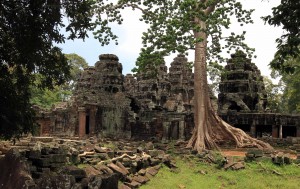
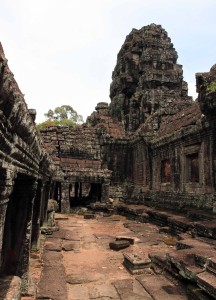
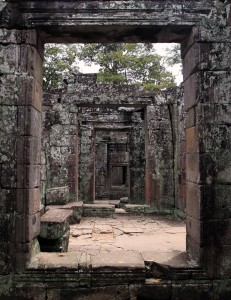

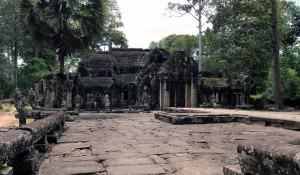
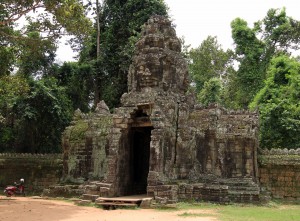
The tuk-tuk pulled up to Banteay Kdei temple next and my driver told me to meet him on the opposite side of the temple after walking through the compound. I then walked to the temple ruins, ignoring all the vendors trying to sell me water, coconuts, and souvenirs – the most annoying thing about these people is that after I politely decline and say “No thank you”, they continued to pester me until I was no longer within shouting distance of them (the worst are the little children who follow the tourists continuing to beg, not understanding that “No” means “No”). So, after passing these persistent people, I came to the western-end of the temple. Banteay Kdei was also built by Jayavarman VII in the Bayon-style sometime between the twelfth and thirteenth centuries; also, several towers now have metal bands tied around their tops to keep the stonework together. I walked through the different enclosures of the temple and walked around the towers in the center; as with all the other temples I visited today, I tried exploring every passage and room open to the public. When I was finished, I walked out the east entrance, bought a large bottle of water, found my tuk-tuk driver, and he chauffeured me past Pre Rup temple (which I visited yesterday evening) to the next temple on the tour route.
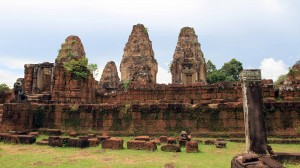

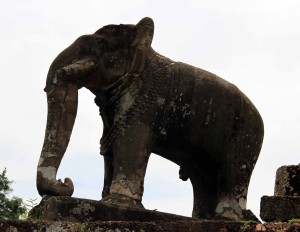
We soon reached East Mebon temple – our next stop. East Mebon was built in the tenth century by King Rajendravarman and it was dedicated to the Hindu god Shiva; stylistically, the temple is very similar to Pre Rup, although this temple does have statues of elephants standing at the four corners of the temple, on two different tiers. I first walked around most of the temple, before proceeding up the different levels. At the topmost level, I entered inside each of the five towers (each tower had an open entrance to its inner room and “false doors” on the three other sides of the tower – just like all the other temples, many “false doors” were built throughout to maintain symmetry). After touring this temple, I exited out the main entrance, found my driver (he was eating lunch), and then – after his lunch was consumed – we drove to the next temple.
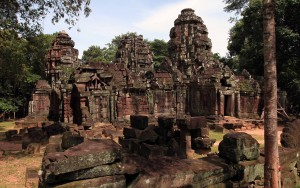
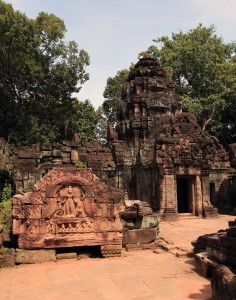
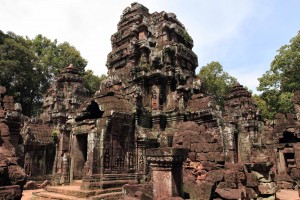
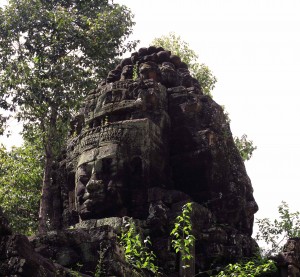
The next temple I visited was Ta Som. The tuk-tuk pulled up to the entrance and I walked straight through to the temple compound. This temple was built in the twelfth century by King Jayavarman VII (also in the Bayon-style) and he dedicated it to his father, King Dharanindravarman II. Also, this temple has been left largely unrestored, just like Ta Prohm, so there were many jungle trees coexisting with the stone ruins. After exploring this temple like the rest (it really does make me feel like a young kid again, to just wander around the temple, trying to explore every enclosure and passageway) I exited out the way I came, met up with my driver, and he took me to the next temple on the route – the road now ran along side marshes adjacent to the Siem Reap River and there were a number of dead trees and logs sprouting up out of the marsh.
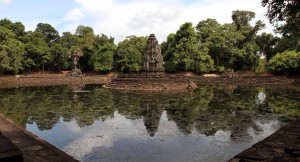
We reached Neak Pean temple next, which is built on an artificial island in the marshland. I walked along the causeway to the island and then entered the temple complex; architecturally, this structure is drastically different from the other ruins I visited and is designed with a central square pond with a Buddhist sanctuary in the middle, as well as four smaller square ponds located at the cardinal directions and designed to represent the four elements (earth, wind, fire, and water); the complex was built as one of King Jayavarman VII’s hospitals in the twelfth century; it was believed that ill patients that bathed in these pools would then have the elements within them become balanced, thus curing them of their diseases. Also, unfortunately, the structure was mostly closed to visitors due to an ongoing archaeological dig at the site; so, after paying a short visit to this hospital with Buddhist temple, I walked back across the long causeway, to my tuk-tuk driver, and we drove off to the last temple on my itinerary today.
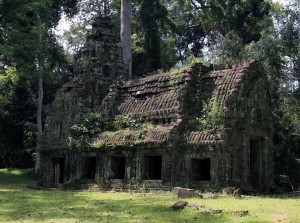
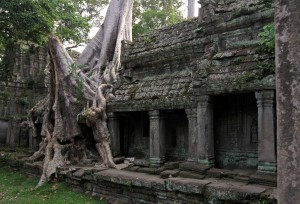
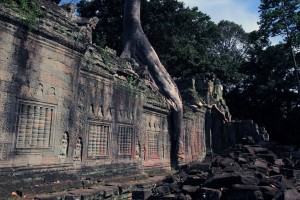
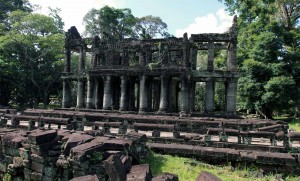
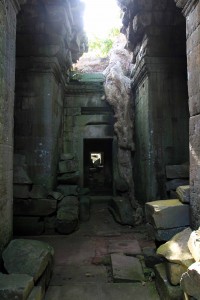
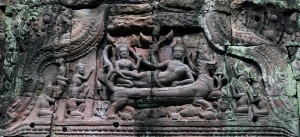
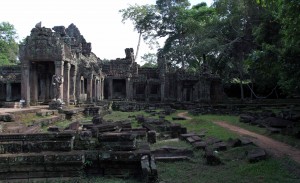
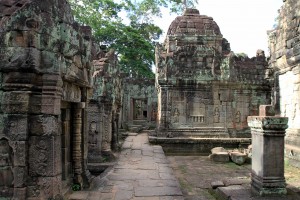
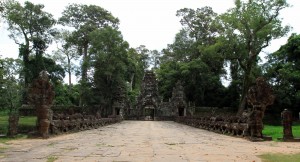
The last temple we stopped at was Preah Khan temple. Upon reaching the entrance, my driver told me to meet him on the opposite side again; I then walked through the entrance and up to the temple complex. Preah Khan was built by King Jayavarman VII in 1191 AD and at the location of King Jayavarman VII’s victory over the invading Chams. Also, just like Ta Prohm and Ta Som, this temple has been left largely unrestored. This temple was also unique for having a two-storied columned building off to one side (ruining any symmetry) and there were many other columns left standing throughout the structure. Also, inside the central temple is a small stupa that can look as though it is a giant candle if one aligns the top of it up with cracks in the wall. After spending a lot of time exploring this large and very cool temple, I then exited out the opposite side and met my tuk-tuk driver again. He then drove me back to Siem Reap and dropped me off at the Angkor Market; I paid him the twenty dollars his services had cost me as well as a tip; I then bought three Cambodian-produced beers (from “Kingdom”, “Cambodian”, and “Angkor” breweries), swiss and cheddar cheese, and a bottle of Chilean Cabernet Sauvignon at the market before heading back to my hotel room. I relaxed in my room for quite some time, drinking the three beers I had bought and eating cheese, before walking to Pub Street to have some dinner – which turned out to be a Ramana Pizza (anchovies, capers, and tomatoes) and a mixed fruit shake. I then walked back to the hotel, arranged a bus for tomorrow to take me to Phnom Penh, and then drank my bottle of wine and ate the rest of my cheese before going to sleep.
Also, today I finally went through all eight flash cards I had brought with me on my travels – 128 gigabytes in 116 days – so now I’ll have to start cycling back through them.
